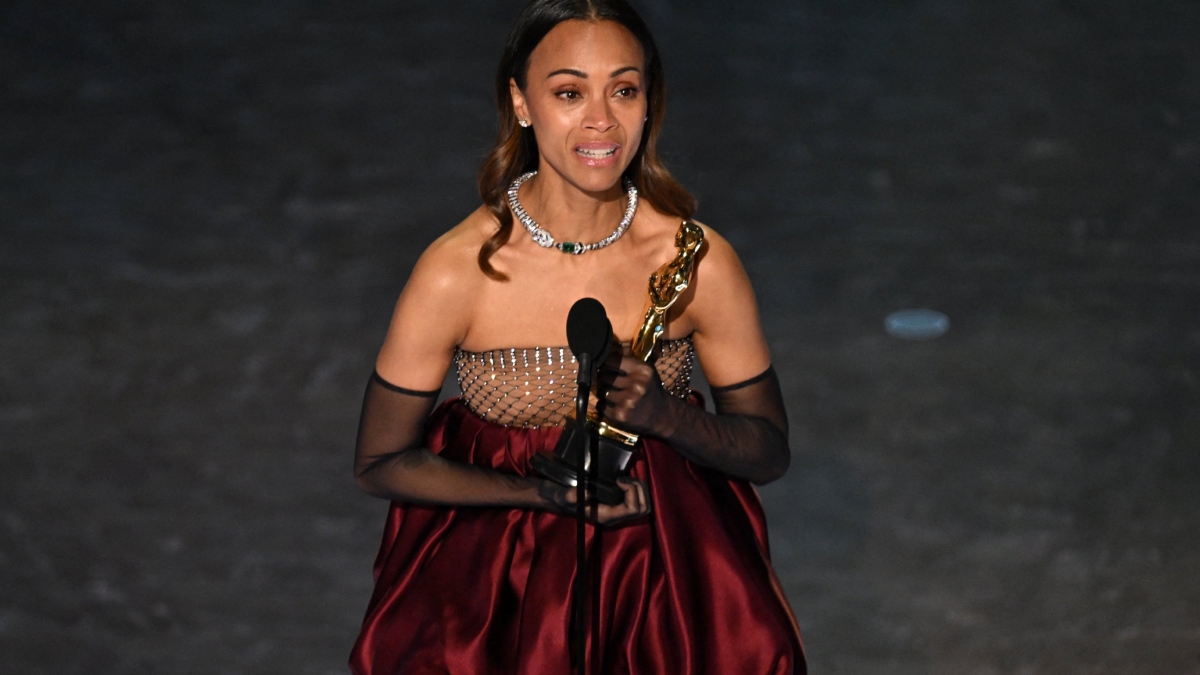RIP Q: Legendary US entertainment icon Quincy Jones, who worked with Frank Sinatra and Michael Jackson, dies aged 91

LOS ANGELES, Nov 4 — Quincy Jones, the man known simply as “Q,” was a huge influence on American music in his work with artists ranging from Count Basie to Frank Sinatra and reshaped pop music in his collaborations Michael Jackson.
Jones died on Sunday at the age of 91, his publicist said.
There was very little Jones did not do in a music career of more than 65 years. He was a trumpeter, bandleader, arranger, composer, producer and winner of 27 Grammy Awards.
A studio workaholic and a virtuoso at handling delicate egos, he shaped recordings by jazz greats such as Miles Davis, produced Sinatra, and put together the superstar ensemble that recorded the 1985 fund-raiser “We Are the World,” the biggest hit song of its time.
Jones also was a prolific writer of movie scores and co-produced the film “The Color Purple,” as well as the 1990s television show “The Fresh Prince of Bel-Air,” which launched the career of Will Smith.
Jones’ circle of friends included some of the best known figures of the 20th century. He dined with Pablo Picasso, met Pope John Paul II, helped Nelson Mandela celebrate his 90th birthday and once retreated to Marlon Brando’s South Pacific island to recover from a breakdown.
Everything he did was stamped with his universal and undeniable hipness. U2 frontman Bono called Jones “the coolest person I’ve ever met”.
Jones’ most lasting achievements were in collaboration with Jackson. They made three landmark albums — “Off the Wall” in 1979, “Thriller” in 1982, and “Bad” in 1987 — that changed the landscape of American popular music. “Thriller” sold as many as 70 million copies, with six of the nine songs on the album becoming top 10 singles.
Quincy Jones’ most lasting achievements were in collaboration with Michael Jackson with three hit albums. — Reuters pic
Musical break-in
Quincy Delight Jones Jr. was born March 14, 1933, in Chicago. As a boy, he aspired to be a gangster like those he saw in his rough neighbourhood. He was 7 when his mother was taken to a mental institution. His father, a carpenter, remarried and moved the family to Bremerton in Washington state, where young Quincy pursued a life of petty crime.
Jones said his interest in music bloomed in Bremerton, when he and some friends found a piano after sneaking into the community centre in the segregated wartime housing project where they lived.
He experimented with different instruments in the school band before settling on the trumpet and by 13 was playing jazz, popular music and rhythm-and-blues in nightclubs. In Seattle at age 14, Jones met 16-year-old Ray Charles, not yet famous, who taught him to arrange and compose music.
Basie and trumpeter Clark Terry also would be mentors to the young Jones and he won a scholarship to what would become the Berklee School of Music in Boston. He gave it up, however, to go on the road with Lionel Hampton’s band as a teenage trumpet player in the early 1950s.
“Music was the one thing I could control,” Jones wrote in his autobiography. “It was the one world that offered me freedom … I didn’t have to search for answers. The answers lay no further than the bell of my trumpet and my scrawled, pencilled scores. Music made me full, strong, popular, self-reliant and cool.”
In the late 1950s he went on U.S. government-sponsored tours around the world with a band organised by bebop jazz pioneer Dizzy Gillespie. Jones then led his own band through Europe. He was deeply in debt in the early 1960s when he took a job at Mercury Records in New York, becoming one of the first Black executives at a white-owned record company.
There, Jones ventured out of the jazz genre and produced his first hit single, “It’s My Party,” a Lesley Gore song that topped the U.S. pop chart in 1964.
Jazz purists called him a sell-out for making pop music but Jones later told Rolling Stone: “The underlying motivation for any artist, be it Stravinsky or Miles Davis, is to make the kind of music they want and still have everyone buy it.”
At Mercury, Jones got his first movie-scoring job, Sidney Lumet’s “The Pawnbroker.” He went on to score nearly 40 films, including “In the Heat of the Night,” “In Cold Blood,” “Mackenna’s Gold,” “The Wiz” and part of the television mini-series “Roots”.
The people Jones worked with would populate a jazz or R&B hall of fame – Basie, Gillespie, Tommy Dorsey, Dinah Washington, Nat King Cole, Sarah Vaughan, Aretha Franklin. But he also produced in other genres with, among others, Paul Simon, Amy Winehouse, Barbra Streisand, and Donna Summer.
He arranged Sinatra’s hit “Fly Me to the Moon” that astronaut Buzz Aldrin played a cassette recording of during the first moon landing in 1969. Years later, Jones told GQ magazine that Sinatra “called me up, and he was like a little kid: ‘We got the first music on the moon, man!’”
His own recordings were just as eclectic, veering from jazz to soul, African to Brazilian. In 1991 his “Back on the Block” record won the Grammy for album of the year and also Grammys in the rap, rhythm and blues, jazz fusion and instrumental categories.
Jones’ work with Jackson was historic, although Jackson’s record company initially thought Jones was too jazzy to be his producer. They started in 1979 with “Off the Wall,” after the singer had split from his brothers in the Jackson 5 and put together a mix of dance tracks and ballads. The album featured four songs that became top 10 hits.
Their 1982 collaboration, “Thriller,” became a cultural touchstone of the 1980s. Jones and Jackson wanted to broaden Jackson’s fan base so they added rock elements, getting guitarist Eddie Van Halen to play a blistering solo on “Beat It,” which became one of Jackon’s biggest hits ever. Complemented by dazzling videos featuring Jackson’s mesmerising dancing just as MTV was coming of age, “Thriller” made the entertainer one of the biggest stars in the world.
Divine collaboration
Hits like “Beat It,” “Billie Jean” and the title song made “Thriller” the biggest selling album of all time. It won three Grammys for Jones and seven for Jackson.
They followed that in 1987 with “Bad,” which had five No. 1 hits, including “Smooth Criminal” and “Man in the Mirror.”
In 1985, Jones, Jackson and singer Lionel Richie organised “We Are the World,” a record to raise money for fighting famine in Ethiopia. The huge all-star chorus featured Ray Charles, Bob Dylan, Diana Ross, Bruce Springsteen and Smokey Robinson. Jones set the tone for the recording session with a sign that said: “Leave your ego at the door.”
Jackson died in 2009, and Jones later sued the estate, testifying that he was “cheated out of a lot of money” in royalties. In July 2017, a Los Angeles jury awarded Jones $9.4 million.
Jones started his own record label, Qwest, as well as Vibe, a magazine that covered the hip-hop world, and had various foundations and humanitarian projects.
He kept launching new projects well past the traditional retirement age. In 2018, Jones, then 84, told GQ magazine: “I never been this busy in my life.”
Jones was married three times. His first wife was his high school sweetheart Jeri Caldwell with whom he had one daughter; his second wife was Swedish model Ulla Andersson with whom he had two children, including Quincy III, who became a hip-hop producer.
His third wife was “Mod Squad” actress Peggy Lipton, with whom he had two daughters, including actress Rashida Jones. He had two other children outside his marriages, including one with actress Nastassja Kinski. — Reuters
Related
Oscars 2025: Zoe Saldana’s ‘First American of Dominican Descent’ acceptance…
It is significant to note that Saldana won a BAFTA, Golden Globe, and Critics Choice award for Emilia Perez this award season.
‘American Idol’ Fans Won’t Want to Miss This Special Episode…
Awards season may be ending with the 2025 Oscars, but the best is yet to come for American Idol.Hollywood's biggest night is airing on ABC on Sunday, March 2, a
‘American Pickers’ Star Mike Wolfe Shares Major Career News
Entertainment gossip and news from Newsweek's network of contributorsReality television star Mike Wolfe has landed his first movie role.The American Pickers st
2025’s notable celebrity losses
Despite 2025 being far from over, we have already had to say goodbye to several well-known figures this year.From celebrated musicians and actors to renowned at













